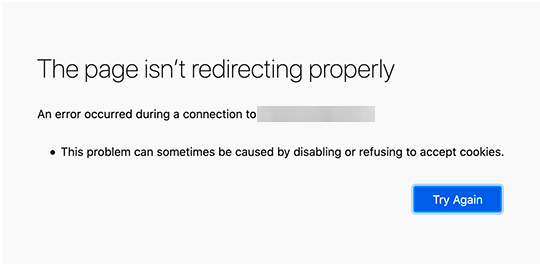
How to Fix Err_too_many_redirects Error In WordPress
How to Fix ERR_TOO_MANY_REDIRECTS Error in WordPress. This guide equips you with the knowledge to diagnose the issue, explore solutions, and break free from this technical maze.
 Understanding the Error:
Understanding the Error:
Imagine entering a maze with every path leading back to the entrance. That’s essentially what happens when a website encounters a “redirect loop.” This error signifies that the website’s configuration is stuck in a cycle of redirects, preventing it from displaying the intended content.
Potential Culprits:
- Misconfigured Redirects:Incorrect server-side redirect rules can create infinite loops.
- Plugin Conflicts:Certain plugins might interfere with redirects, causing unexpected loops.
- Browser Caching:Outdated cached data in your browser can sometimes lead to redirection issues.
- Corrupted Files:Damaged website files, including .htaccess or server configuration files, can trigger loops.
- Forced HTTPS:Forcing HTTPS without a valid SSL certificate creates redirection conflicts.
- Hard-coded Links:Manually adding incorrect URLs within your website’s code can lead to loops.
- Mismatched URL Settings:Inconsistent configurations in WordPress URL settings can cause redirection errors.
- Domain Prefix Discrepancy:Mismatched “www” prefix usage between your website and its URL settings can create loops.
Troubleshooting Steps:
- Clear Browser Cache and Cookies:Eliminate outdated data that might be causing the issue.
- Check for Conflicting Plugins:Temporarily deactivate plugins one by one to identify culprits and update or replace them.
- Inspect .htaccess File:Look for suspicious redirect rules in the .htaccess file if you have access.
- Temporarily Disable Redirects:If possible, temporarily disable server-side redirects to pinpoint the problematic rule.
- Contact Hosting Provider:Seek assistance from your hosting provider for potential server-side issues.
Additional Tips:
- Use a Different Browser:Test the website with a different browser to isolate browser-specific issues.
- Check Server Logs:Detailed information about redirects and the loop’s root cause might be found in server logs.
- Seek Professional Help:Consider consulting a web developer for specialized assistance with complex issues.
Proactive Measures:
- Avoid Forced HTTPS Without SSL:Ensure a valid SSL certificate is installed before enforcing HTTPS.
- Update Hard-coded Links:Verify and update any manually added URLs within your website’s code.
- Verify URL Settings:Double-check the consistency of your WordPress URL settings.
- Review Domain Prefix:Ensure consistency in the “www” prefix usage across your website and URL settings.










